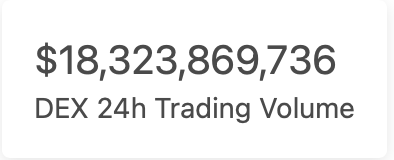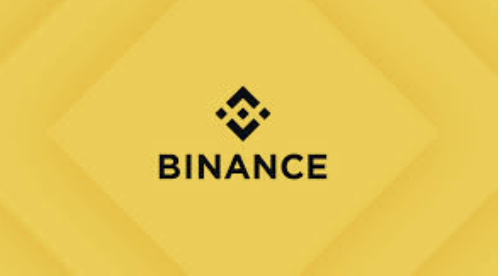Coexisting Exchange Platforms: Limit Order
Books and Automated Market Makers
Jun Aoyagi & Yuki Ito
Discussion by Katya Malinova
DeGroote School of Business
McMaster University
CBER Conference
May 2022, Boston
Decentralized Exchanges: Why Important?
- Blockchain: infrastructure for value exchange
- \(\to \) trading?!
- But infrastructure \(\ne\) market
- How do you organize a marketplace on-chain?
- Limit order book?
- Very challenging
- monitor & re-quote \(\to\) gas fees to change orders, all nodes have to update, ...
- Very challenging
- Centralized market \(\to\) off-chain, missing out on the infrastructure
- Limit order book?
- Decentralized exchanges & AMM!!
- Pool liquidity, automate pricing
- HUGE!

A genuinely novel market institution: how does it interact with the existing ones?
Multiple markets & their co-existence
- A long-standing issue in finance
- Different markets/pricing structures co-exist in practice
- Yet, theoretically, co-existence is less obvious
- Pagano (1989, QJE) "Trading Volume and Asset Liquidity"
- co-existence is either a knife-edge, or heavily relies on trader conjectures
- "clustering" by size
- Glosten (1994, JF) "Is the Electronic Open Limit Order Book Inevitable?"
- Back & Baruch (2007, JF) "Working orders in limit order markets and floor exchanges"
- "Equivalent" equilibria under the two different pricing structures
- Zhu (2014, RFS) "“Do dark pools harm price discovery?"
- Informed concentrate on lit exchanges (and only trade on lit for low volatility)
- Pagano (1989, QJE) "Trading Volume and Asset Liquidity"
Co-existence of DEX & CEX: very exciting topic!
- Traditionally:
- different markets = markets with different pricing structures
- DEX vs. CEX
- different pricing structures
- different custody arrangements
- possibly different use value to trading/holding a token on DEX vs CEX
- different settlement arrangements & a whole new set of players (validators)
- possible attacks on pending transactions
- \(\to\) next paper in this session!
Several papers on AMM
- Capponi and Jia (2021)
- welfare of the liquidity providers on the DEX
- conditions for the liquidity breakdowns
- Lehar & Parlour (2021)
- compare the two markets "in isolation" + empirics on UniSwap
- when is the DEX superior?
- Park (2021)
- compares different pricing functions & the desired properties
- do (and which) pricing functions give rise to attacks on pending transactions & MEV?
- This paper:
- examine co-existence of DEX and CEX
- Focus on the novel pricing on DEX
- Search for an equilibrium where a DEX co-exists with a limit order book
- \(\to\) it exists and stable
- Empirical predictions
- Buy vs. sell asymmetry of the price impact on DEX
- \(\to\) informed buyers vs sellers differ in DEX vs CEX preferences \(\to\) asymmetry in buy vs sell order info
- Complementarities in DEX & CEX liquidity
- Buy vs. sell asymmetry of the price impact on DEX
This paper
- Relate the results to existing theoretical literature on co-existence
- Are the issues identified in existing literature surface here?
- And if not, what is key to robust co-existence here?
General Comments & Questions
- Are there equilibria where trading concentrates on a single market?
- Focus on a particular parameter for an interior solution
- How large is this parameter region?
- Are the pricing diffs + info the main ingredients to understand DEX vs. CEX?
- The role of other differences?
- Model-wise, the limit order book on CEX is very stylized: how critical is it?
- Price discovery?
- Period 1: Liquidity providers ("market makers")
- post quotes on CEX & provide liquidity on DEX
- Period 2:
- Change in the fundamental \(\to\) Informed liquidity demanders
- All trade in the same direction
- Continuum of them \(\to\) trading fully reveals the info
- No change in the fundamental \(\to\) "Noise" liquidity demanders
- A continuum of them
- Buy demand = sell demand \(\to\) no imbalance
- Change in the fundamental \(\to\) Informed liquidity demanders
- Period 3 (if there was a change in the fundamental):
- Arbitrageurs on DEX
- Liquidity providers re-quote on CEX
Model Recap: Who and When?
Model Recap: Where & How?
DEX
- "Limit order book"
- but not discriminatory
- Liquidity demanders enter sequentially but:
- all pay the same ask
- \(\to\) no price impact cost from "earlier"/faster entrants on later ones
- no "walking the book", no MM re-quoting
- Costs:
- informed & noise pay the same bid-ask spread
CEX
- Bonding curve \(\to\) price
- "discriminatory"
- Liquidity demanders enter sequentially and:
- "later" buyers pay more b/c of the price impact from "earlier"/faster entrants
- Costs:
- informed face the price impact cost
- all pay transaction cost
- in terms of "asset" \(\to\) depends on trader's asset valuation


Model Recap: informed trader costs & choices
DEX
CEX


bid-ask spread cost (flat)
trans cost (flat)
+
marginal price (increases as informed trade on the same side)
\(\Rightarrow\) trade on DEX until the marginal price there = the "flat" ask (bid) on CEX
\(\Rightarrow\) informed trade on both exchanges
Model Recap & Comments: noise trader costs & choices
DEX
CEX


bid-ask spread cost (flat)
trans cost (increases in the noise trader asset valuation)
+
marginal price (flat = fundamental)
\(\Rightarrow\) trade on DEX if the private asset valuation is sufficiently low (\(\to\) perceive the trans fee to be "low") & on CEX otherwise
\(\Rightarrow\) noise trade on both exchanges
- This assumption seems key, yet unclear where heterogeneity in private valuations comes from
- Explore motives for trading on CEX vs DEX?
- Differences in aspects other than the price?
- E.g., custody?
- \(\to\) trade exclusively on DEX because need tokens to use them in DeFi applications
- arguably these are "noise"
- \(\to\) (?) expect more "noise" on DEX?
Model Recap & Comments: liquidity providers
DEX
CEX


Set the bid-ask spread to "break-even"
- zero profits in expectation on CEX
- there exists a liquidity pool size on DEX \(\to\) zero profits
- lose on the informed, profit from the "noise"
A knife-edge case?
Why only one level of the book?
- The further in the queue, the more likely to trade against single-sided flow (informed)
- Also, say, measure 1 of noise in total
- \(\to\) if the queue position >0.5, you only get to trade against the informed!
- \(\to\) must quote at the "new" fundamental
How critical is the non-discriminatory, no re-quoting LOB?
Comments on the Empirical Implications
informed trade on DEX until the marginal price = the ("fixed") ask/bid on CEX
- Larger liquidity pool on DEX \(\to\) smaller price impact \(\to\) more informed on DEX \(\to\) better liquidity on CEX
- Empirical implication #1 from the paper: adding a DEX improves CEX liquidity
-
Need a more detailed explanation here:
- why wouldn't noise migrate from CEX to DEX after its intro (zero price impact on the DEX!)
- larger size isn't the same as going from "CEX only" to "CEX & DEX"
@katyamalinova
malinovk@mcmaster.ca

slides.com/kmalinova
https://sites.google.com/site/katyamalinova/